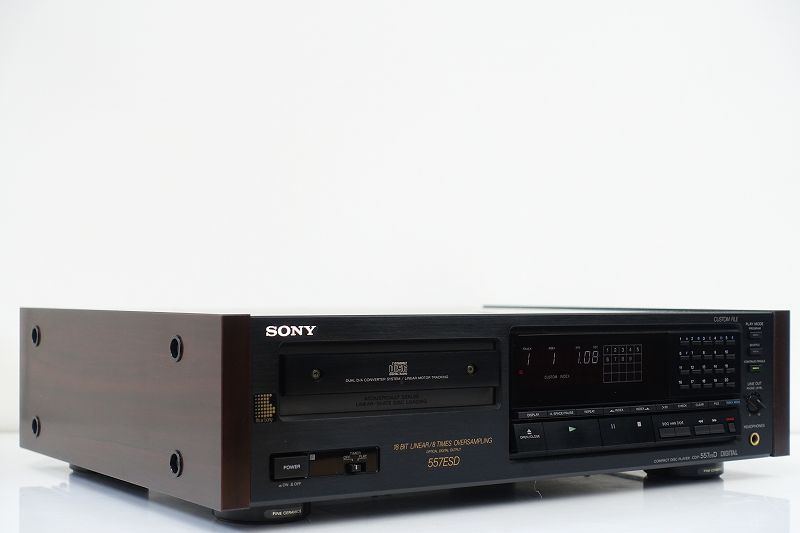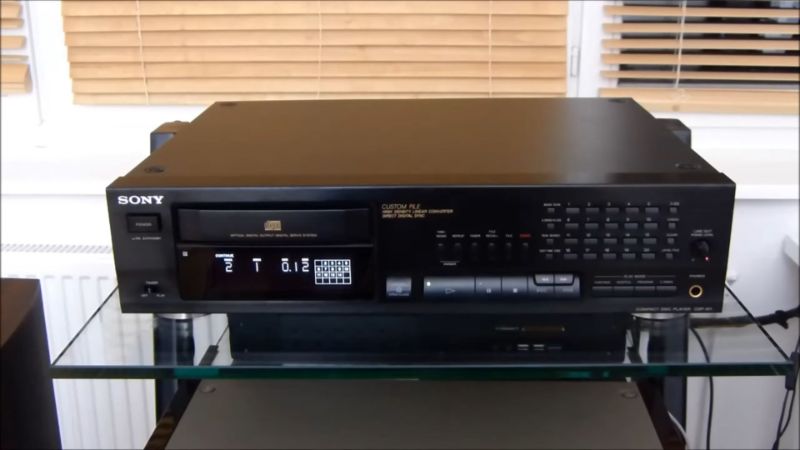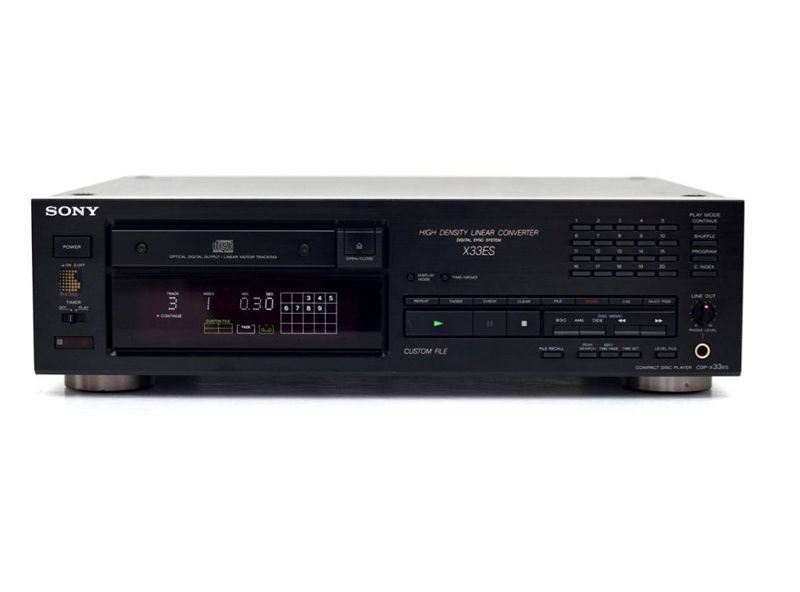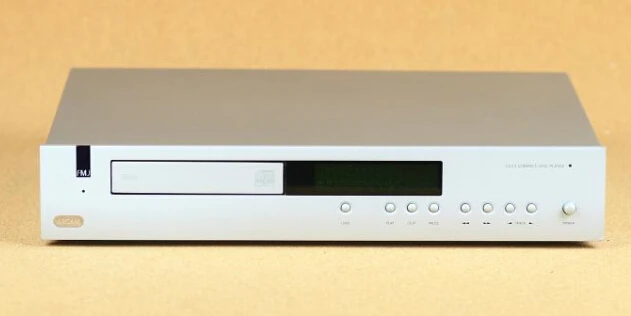It shared much of its genetic make-up with a Philips machine – the CD303 – and was the top model in the company’s first generation range of CD players. To put it another way, its list of component parts reads like a wish list from a 1980s digiphile. The CDM-1 Pro mechanism, which has a glass crystal lens, is the crowning glory. When you click the open/close button on the large, sliding tray assembly (like on late-eighties Meridians), the entire transport assembly slides out! Downstream from perhaps the best CD transport ever created is Philips’ TDA 1540 14bit, 4x oversampling chipset and digital filter, which is still contentious today. That’s correct, a tenth of the price of a £50 DVD player! The end outcome, however, is not as awful as you might imagine – rather the opposite, in fact.
The fascia panel is a riot in Marantz’s signature champagne gold. In fact, it’s so ridiculous that it quickly becomes apparent how tediously dull any modern player is. The display consists of fifteen green LEDs installed behind a thick Perspex strip, with another fifteen mounted beneath it. The green ones light up to indicate which tracks are scheduled to be played, while a single red one beneath them illuminates to indicate the track number now being played. Bonkers! They couldn’t afford a numeric LED display, could they? In retrospect, given that it would have been designed in 1981, the answer is most likely no!
Keeping with the theme, the ’73 gets a slew of new LEDs. A bank of three green LEDs on either side of the disc transport recess – which is thoughtfully exposed via a top-mounted Perspex inspection hatch(!) – cast light on the disc you’re spinning. Was that a nod to the world’s most advanced turntable from five years ago, the Technics SL10? There are three extra icons in the frontal disc transport window – one for ‘Laser,’ another for ‘Standby,’ and yet another for ‘Pause’ – merely to keep you informed about what’s going on in the new digital age. The power LED is next, followed by the vivid blue lighted ‘Compact Disc Digital Audio’ logo.
It’s a lot of fun, but portraying the CD-73 as a digital version of the Blackpool illuminations is missing the point. It’s time to listen now that you’ve figured out how to use the counter-intuitive transport controls (play/next), cancel (stop), track scan, and fast-forward/rewind, and inserted a CD (and watched the transport thump back into the main case so quickly that the whole shebang jumps an inch backwards!).
The CD-73 has a pleasant and engaging tone. It’s a cliché, but the first generation Philips-based machines sound more analogue than anything digital that followed – and it’s true. You receive a delicate, seductive sound that perfectly complements mild, acoustic music – in fact, it flatters it. This machine is rich and delicious in the same way that the Linn LP12s of the 1970s were — it draws you in and envelops you rather than trying to overwhelm your senses with the highest level of detail resolution and dynamics. It makes the best of certain forms of music and renders others dull and undynamic, preferring the melodies of Glen Campbell’s Wichita Lineman to Goldie’s Timeless.
The CD-73 from Marantz is a contradiction. It has one of the smoothest, most soothing sonic signatures while also being a highly charismatic machine. Unlike so many current computerized disc spinners, you know exactly where you are with this piece of equipment and must learn to appreciate it – you can’t just expect it to adapt to your needs. It’s becoming increasingly rare these days. After all, it cost more than £500 in 1983 (about a third more than a Linn LP12 at the time), so it was never going to be a big seller. Even yet, if you seek hard enough, you may find them for £250 or less. However, you must trial before you buy, making sure to thoroughly inspect the transport tracks on the disc. A decent example should be able to play anything, even recent 80-minute CD-Rs!







